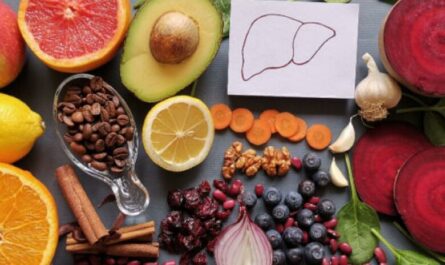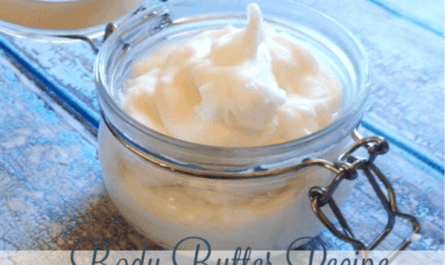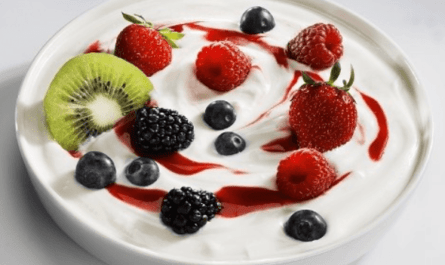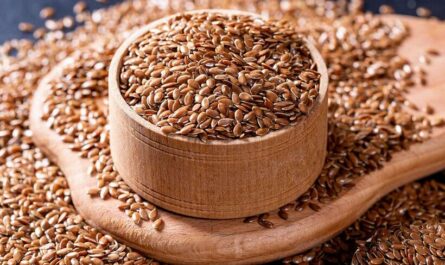Baking powder is a staple leavening agent that gives baked goods their delightful rise and fluffy texture. But what happens when you’re mid-recipe and realize you’re all out? Or perhaps you follow a dietary restriction that prevents you from using baking powder. Fear not! There are numerous easy substitutes for baking powder. This article will explore 16 fantastic substitutes for baking powder, along with tips and tricks for using them effectively.
What is Baking Powder?
Baking powder is a dry leavening agent composed of three main ingredients: baking soda (sodium bicarbonate), cream of tartar (an acid), and sometimes cornstarch (a moisture absorber).
When mixed with liquid ingredients, baking powder undergoes a chemical reaction that releases carbon dioxide gas, causing the batter or dough to rise and expand, resulting in light and airy baked goods.
There are two types of baking powder: single-acting and double-acting. Single-acting baking powder reacts only when it comes into contact with moisture.
So it’s crucial to get the batter or dough into the oven quickly after mixing. Double-acting baking powder, on the other hand, reacts twice – once when it’s mixed with liquid. It provides a more reliable and consistent rise.
| Type of Baking Powder | Reaction Timing | Shelf Life |
|---|---|---|
| Single-acting | Reacts only when mixed with moisture | 6-12 months |
| Double-acting | Reacts when mixed with moisture and when exposed to heat | 12-18 months |
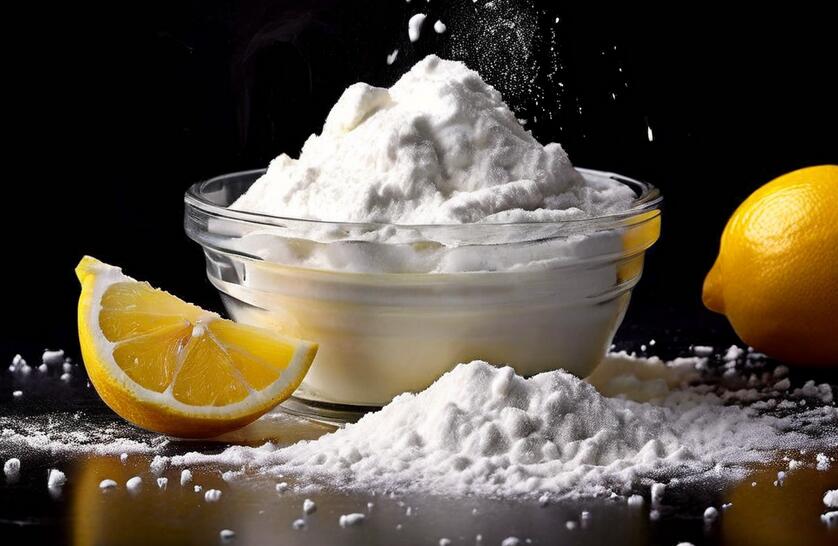
16 Best Substitutes for Baking Powder
Now that we know what baking powder does, let’s explore some of the best substitutes you can use when you’re in a pinch.
1. Baking Soda and Cream of Tartar
One of the most common substitutes for baking powder is a combination of baking soda and cream of tartar. This mixture mimics the composition of baking powder, providing both the base (baking soda) and the acid (cream of tartar) needed for leavening.
To replace 1 teaspoon of baking powder, use:
- 1/4 teaspoon baking soda
- 1/2 teaspoon cream of tartar
Simply mix these ingredients together and use them in place of baking powder in your recipe.
2. Baking Soda and Vinegar
Another effective substitute for baking powder is a combination of baking soda and vinegar. When these two ingredients are mixed, they create a chemical reaction that releases carbon dioxide gas, similar to the way baking powder works.
To replace 1 teaspoon of baking powder, use:
- 1/4 teaspoon baking soda
- 1/2 teaspoon vinegar (white or apple cider)
Add the baking soda to your dry ingredients and the vinegar to your wet ingredients. When combined, they’ll foam up and help your baked goods rise.
3. Baking Soda and Lemon Juice
Similar to the baking soda and vinegar combination, baking soda and lemon juice can also be used as a substitute for baking powder. The citric acid in lemon juice reacts with the baking soda to create the necessary leavening effect.
To replace 1 teaspoon of baking powder, use:
- 1/4 teaspoon baking soda
- 1/2 teaspoon lemon juice
Add the baking soda to your dry ingredients and the lemon juice to your wet ingredients, just as you would with the vinegar substitute.
4. Baking Soda and Buttermilk
Buttermilk is another acidic ingredient that can be used in combination with baking soda to replace baking powder. The lactic acid in buttermilk reacts with the baking soda, creating the desired leavening effect.
To replace 1 teaspoon of baking powder, use:
- 1/4 teaspoon baking soda
- 1/2 cup buttermilk (reduce the liquid in the recipe by 1/2 cup)
Add the baking soda to your dry ingredients and replace 1/2 cup of the recipe’s liquid with buttermilk.
5. Baking Soda and Yogurt
Plain yogurt can also be used as an acidic ingredient to activate baking soda and create a leavening effect similar to baking powder. The lactic acid in yogurt reacts with the baking soda, helping your baked goods rise.
To replace 1 teaspoon of baking powder, use:
- 1/4 teaspoon baking soda
- 1/2 cup plain yogurt (reduce the liquid in the recipe by 1/2 cup)
As with the buttermilk substitute, add the baking soda to your dry ingredients and replace 1/2 cup of the recipe’s liquid with plain yogurt.
6. Baking Soda and Molasses
Molasses is a thick, syrupy sweetener that’s slightly acidic, making it a suitable ingredient to combine with baking soda for leavening. This substitute works well in recipes that call for a darker color or a slightly sweet, rich flavor.
To replace 1 teaspoon of baking powder, use:
- 1/4 teaspoon baking soda
- 1/4 cup molasses (reduce the liquid in the recipe by 1/4 cup)
Add the baking soda to your dry ingredients and replace 1/4 cup of the recipe’s liquid with molasses.
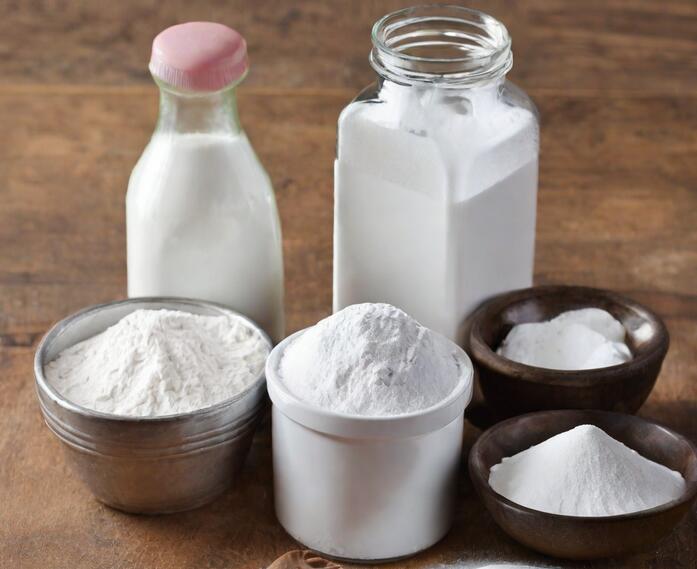
7. Self-Rising Flour
Self-rising flour is a pre-mixed combination of all-purpose flour, baking powder, and salt. It’s a convenient substitute for recipes that call for both flour and baking powder, as it eliminates the need to measure these ingredients separately.
To replace 1 cup of all-purpose flour and 1 teaspoon of baking powder, use:
- 1 cup self-rising flour
Keep in mind that self-rising flour already contains salt, so you may need to adjust the amount of salt in your recipe accordingly.
8. Whipped Egg Whites
While not a direct substitute for baking powder, whipped egg whites can provide a leavening effect in certain recipes, such as pancakes, waffles, or sponge cakes. The air incorporated into the egg whites during whipping expands during baking, causing the batter to rise.
To use whipped egg whites as a leavening agent:
- Separate the egg whites from the yolks.
- Whip the egg whites until stiff peaks form.
- Gently fold the whipped egg whites into your batter.
This method works best in recipes that don’t require a significant amount of leavening, as the egg whites provide a more delicate rise compared to baking powder.
9. Club Soda or Seltzer Water
Club soda and seltzer water are carbonated beverages that can provide a quick leavening effect in certain recipes, such as pancakes or tempura batter. The carbonation in these beverages creates bubbles that can help the batter rise and become light and crispy.
To use club soda or seltzer water as a leavening agent:
- Replace some or all of the liquid in your recipe with club soda or seltzer water.
- Mix the batter gently to avoid deflating the bubbles.
- Cook or bake the batter immediately to take advantage of the carbonation.
This method works best for recipes that require a light, airy texture and don’t rely heavily on baking powder for leavening.
10. Whipped Cream
Similar to whipped egg whites, whipped cream can provide a light and airy texture to certain recipes, such as mousses, soufflés, or chiffon cakes. The air incorporated into the cream during whipping expands during baking, helping the batter or mixture rise.
To use whipped cream as a leavening agent:
- Whip heavy cream until stiff peaks form.
- Gently fold the whipped cream into your batter or mixture.
- Bake or chill the mixture as directed in your recipe.
This method works best for recipes that require a delicate, fluffy texture and don’t rely heavily on baking powder for leavening.
11. Yeast
Yeast is a living organism that produces carbon dioxide gas when it feeds on sugars. This makes it an effective leavening agent in baked goods like bread, rolls, and pizza dough.
While yeast isn’t a direct substitute for baking powder, it can be used to leaven certain recipes that require a longer rising time.
To use yeast as a leavening agent:
- Dissolve active dry yeast in warm liquid (water or milk) with a small amount of sugar.
- Allow the yeast mixture to sit for 5-10 minutes until it becomes foamy.
- Add the yeast mixture to your other ingredients and knead the dough as directed in your recipe.
- Allow the dough to rise in a warm place until doubled in size before baking.
Keep in mind that using yeast as a leavening agent will result in a different texture and flavor. It will require more time for rising and proofing.
12. Sourdough Starter
A sourdough starter is a fermented mixture of flour and water that contains wild yeast and bacteria. As the starter ferments, it produces carbon dioxide gas. This can be used to leaven baked goods like bread, pancakes, and waffles. While sourdough starter isn’t a direct substitute for baking powder, it can provide a unique flavor and texture to your recipes.
To use the sourdough starter as a leavening agent:
- Feed your sourdough starter with equal parts flour and water until it becomes bubbly and active.
- Add the active sourdough starter to your recipe’s ingredients, adjusting the amount of flour and liquid as needed.
- Allow the batter or dough to rest at room temperature for several hours or overnight to allow the sourdough starter to work its magic.
- Cook or bake your recipe as directed.
Using sourdough starter as a leavening agent will result in a tangy, complex flavor and a slightly chewy texture, which can be desirable in certain recipes like artisan bread or sourdough pancakes.
13. Baking Soda and Honey
Honey is another natural sweetener that has a slightly acidic pH, making it a suitable ingredient to combine with baking soda for leavening. This substitute works well in recipes that benefit from a subtle honey flavor, such as muffins, quick breads, or cookies.
To replace 1 teaspoon of baking powder, use:
- 1/4 teaspoon baking soda
- 1/4 cup honey (reduce the liquid in the recipe by 1/4 cup)
Add the baking soda to your dry ingredients and replace 1/4 cup of the recipe’s liquid with honey.
14. Baking Soda and Sour Milk
Sour milk, also known as spoiled milk, is milk that has begun to ferment and develop an acidic taste. While it may not sound appealing, sour milk can be used as an acidic ingredient to activate baking soda and create a leavening effect similar to baking powder.
To replace 1 teaspoon of baking powder, use:
- 1/4 teaspoon baking soda
- 1/2 cup sour milk (reduce the liquid in the recipe by 1/2 cup)
Add the baking soda to your dry ingredients and replace 1/2 cup of the recipe’s liquid with sour milk.
15. Baking Soda and Cream of Coconut
Cream of coconut is a thick, sweet, and slightly acidic ingredient commonly used in tropical desserts and beverages. Its acidity makes it a suitable ingredient to combine with baking soda for leavening in recipes that benefit from a coconut flavor.
To replace 1 teaspoon of baking powder, use:
- 1/4 teaspoon baking soda
- 1/4 cup cream of coconut (reduce the liquid in the recipe by 1/4 cup)
Add the baking soda to your dry ingredients and replace 1/4 cup of the recipe’s liquid with cream of coconut.
16. Baking Soda and Cocoa Powder
Cocoa powder is a mildly acidic ingredient that can be used in combination with baking soda to create a leavening effect in chocolate-based recipes, such as cakes, brownies, or cookies. This substitute not only provides leavening but also enhances the chocolate flavor of your baked goods.
To replace 1 teaspoon of baking powder, use:
- 1/4 teaspoon baking soda
- 1 tablespoon cocoa powder
Add the baking soda and cocoa powder to your dry ingredients and proceed with your recipe as directed.
Tips for Using Baking Powder Substitutes
When using any of these baking powder substitutes, keep the following tips in mind:
- Adjust the liquid: Some substitutes, like buttermilk, yogurt, or molasses, add extra liquid to your recipe. Be sure to reduce the amount of other liquids in your recipe accordingly to maintain the proper batter or dough consistency.
- Consider the flavor: Certain substitutes, such as molasses, honey, or cream of coconut, will add their own unique flavor to your baked goods. Keep this in mind when choosing a substitute, and select one that complements the flavors in your recipe.
- Be mindful of the texture: Some substitutes, like whipped egg whites or whipped cream, may result in a slightly different texture compared to baked goods made with baking powder. Expect a more delicate, lighter texture when using these substitutes.
- Allow for rising time: When using yeast or sourdough starter as a leavening agent, remember that these substitutes require longer rising times compared to baking powder. Plan accordingly and allow sufficient time for your dough or batter to rise before baking.
Conclusion
Running out of baking powder doesn’t have to put a damper on your baking plans. With these 16 substitutes, you can confidently continue creating delicious baked goods without making a special trip to the store.
Whether you choose a combination of baking soda and an acidic ingredient, self-rising flour, or even whipped egg whites, you’ll be able to achieve the desired leavening effect and create tasty treats for your family and friends.


